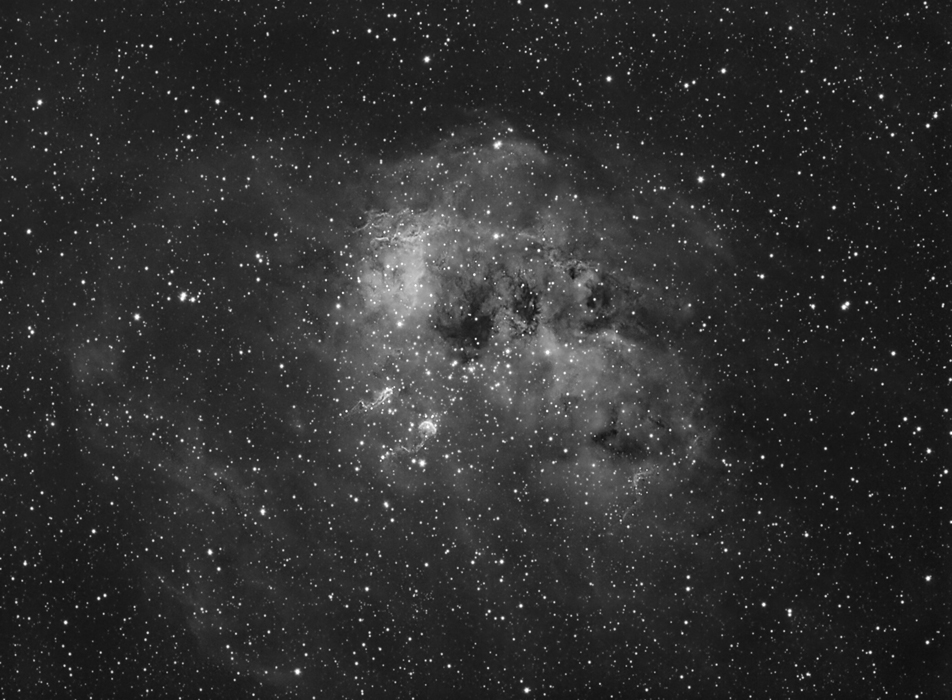IC410 and open cluster NGC1893
Characteristics:
Magnitude: 7.5 (for the open cluster).
Size: about 11' (for the
open cluster). However, the FOV shown
here is approximately 1 degree, which demonstrates the extent of
nebulosity associated with IC410.
Distance: ?
RA: 5h 22m 44s
Dec: +33 degrees 24' 43"
Description:
IC 410 is a region of faint Ha nebulosity surrounding the open star
cluster NGC 1893. The cluster itself is small and located just
below center, underneath the central dust region of the nebula.
This nebula contains complex wisps of gas and is a beautiful target for
Ha astrophotography, although it is surprisingly difficult to find
detailed information about this region on-line. The two prominent
filamentous columns located just below and left of center may have been
blown outward as a result of radiation emitted from the open cluster
(notice how their "tails" generally point away from NGC 1893).
The lower column has a curved, globular head which might represent a bow shock as
gases pushed by radiation accumulate in this region, and/or might
indicate an area of star formation.
I have no idea if these interpretations are correct, although I will
continue to research this and provide updates when I have more
information.
Photographic Details:
Date: December 30, 2004.
Scope: Takahashi
Sky 90 at f4.5 with field flattener/focal
reducer, on a Losmandy G11 mount.
Autoguider: STV
with e-finder.
Camera: SXV-H9.
Filters: Ha
(13nm bandpass) from Astronomik.
Exposures: 36 x
5', unbinned. Total
exposure
time 3 hours.
Conditions:
Temperature 26 degrees F, below average transparency, average seeing,
no
wind.
Post-processing:
No darks, flats,
or bias
frames required. Autoaligned in MaximDL, and sigma combined using the RC Sigma Reject Plugin for Maxim.
DDP done
in ImagesPlus, followed by levels
and curves adjustments in Photoshop CS. Sharpening was performed
using a combination of mild high pass filtering (radius 1, overlay mode
in PS), unsharp masking (amount 25%, radius 2 in PS), and
Lucy-Richardson deconvolution (PSF 5x5, 3 iterations, ImagesPlus) in
selected areas. I purposefully chose to process this region in a
more subtle manner, reflecting the fact that the nebula itself is
actually quite faint when compared to most other Ha emission nebulae.
Please
note: Graphics on this website may not be reproduced without
author permission.
Back to Hydrogen Alpha
Home

